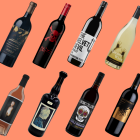The term ‘wine tasting’ is somewhat misleading. While our mouths, tongues and taste buds undoubtedly play a key role in experiencing wine, it’s actually our noses that are doing most of the work.
The human tongue is capable of differentiating between four (or five, depending on who you ask) tastes: sweet, sour, bitter, salty and umami (savoury) – yet it accounts for just 20% of our experience of flavour. The majority of flavour – some 80% – comes from our ability to smell, with the average person able to smell more than 2,000 different scents.
Here’s a quick test to illustrate: plug your nose, put a strawberry (or another brightly-flavoured food) in your mouth and chew a couple of times, then unplug your nose. With your nose in the game the flavour of the strawberry will be considerably more apparent (this is also why you can’t taste anything when you’re bunged up with a cold).
There are two ways that we smell wine (or any food or liquid, for that matter): externally and internally. Externally, there’s orthonasal olfaction – the direct pathway through your nostrils and the method that’s used when you first smell wine in a glass. Internally, there’s retronasal olfaction, which takes place once you’ve taken a sip and the aromas travel up the internal nares located inside your mouth to your nose.
It’s this combination of processes that means you’re able to identify specific flavours – say, of an apple, rather than just a general sweet taste. It’s also why wine professionals will percolate the wine in their mouths (‘swoosh’ it around, essentially) – as this ensures its aromas really get up there.
Of course, smell is an incredibly complex sense, and wine is – at a molecular level – hugely varied. Wine is made up of more than 300 different organic chemical compounds, and it takes more than one compound to evoke an aroma. Most of what you perceive when smelling a glass of wine is the combination of many compounds and their equilibrium with the other wine constituents. So while sommeliers and critics have spent years mastering the art of wine tasting, if you were to put five ‘wine-civilians’ around a table and ask them to give you an impression of a wine, you’d probably get five very different answers!
Nonetheless, it’s entirely possible to refine your tasting palate without committing to years of arduous study. Our guide to tasting wine will help you get started. Once you’re familiar with the basics, a whole world of aroma and flavours await.






